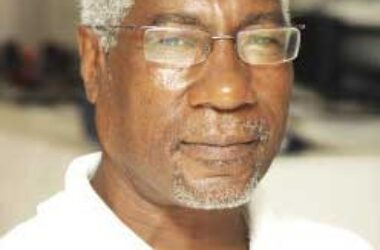
THERE is no doubt, that the friendship between the government and people of Taiwan and the government and people of St. Lucia is bearing much ‘fruit’. And we must complement the Taiwanese Ambassador, Peter Chen, and members of his Taiwanese team for ‘germinating and rearing’ the friendship to the extent that St. Lucia is presently experiencing a beacon of light and hope.
One component of the St. Lucia Youth Entrepreneur Programme is to empower the young people. The programme is so designed to train young people sufficiently to take up the reins of power in business.
The Taiwanese mission is presently assisting with the empowerment of Youth and Women in the Post-Pandemic era of COVID-19. The technical Mission is assisting in Employment, Entrepreneurship and Financial Inclusion.
The programme, known as the Jennes Programme, aims to provide technical assistance and financial services for youth and women’s employment and entrepreneurship which includes a series of opportunities for women in micro, small and medium-size enterprises, in order to respond to the impact of COVID-19 on local economic growth and social stability.
Now we all know that St. Lucia, among the island nations, suffered from the effects of COVID-19.
The high dependence of St. Lucia on international tourism had made it particularly vulnerable to the CoVID-19 crisis.
The ability of family members and friends to send remittances back to Saint Lucia and the impact of tourism had severely affected the poor in St. Lucia, and, obviously, the young people who come from the affected families.
In this regard, the first component of the Employment and Youth Entrepreneurship programme is Vocational Skills Programme for Youth and Women.
About 900 persons applied for the programme. However, 360 youth and women attended a six-week professional digital literacy training in courses, followed by a three-months intensive thematic vocational training in four subjects, namely; Early Childhood Development, Health Aide, Digital and Creative Entrepreneurship, and Hospitality.
The mission was open to providing 60 business proposals with consultant assistance and financial assistance in the amount of USD$2,500.
The second component of Employment and Youth Entrepreneur programme was an incubator for Start-up Entrepreneurial Development Counselling. That programme targeted 300 young people and women who owned their start-up enterprises that were recruited to the programme and half of them received from an Accelerated Growth Fund of USD$3,000 after their business proposals and business strategies were assessed and evaluated by professional consultants. The participants continue to be monitored to optimize their viable business model and prototype development. By prototype I mean their original business model would be monitored and evaluated to the extent that other young persons would be able to replicate or repeat that project.
The third component of the Empowerment of Youth Programme is Relief counselling for Micro, Small and Medium Enterprises. A total of 90 Micro, Small and Medium Enterprises have been selected and granted a Relief Fund of USD $2,000 as well as fully funded consultant service to optimize their viable business model and new product prototype development.
Indeed, the young people of St. Lucia now have everything going for them. And many of those young people are making use of these golden opportunities.
The Taiwanese mission came forward with the initial funding for the Youth Entrepreneur Programme and the government of St. Lucia met its commitment to the programme.
The word on the ground is that the young people are fascinated with the YEP programme. And, not surprisingly, they see a bright future before them.
I should point out here, that one of the aims of the Taiwanese mission is to decrease St. Lucia’s import bill through the increase production of seven crops.
In Latin America and the Caribbean 52.5 million people, approximately 10 percent of the world population, do not have access to food and daily face a challenge to eat. About 75 percent of the world’s poor and hungry live in rural areas and depend on agriculture as their primary source of food, employment, and income (FAO, 2009).
In Saint Lucia, approximately 21.4 percent of households fall below the poverty line (Saint Lucia Country Poverty Assessment – 2005/2006).
The St. Lucia Labour Party government under the leadership of Prime Minister Philip J. Pierre will ensure that food is laid on the table; then the young people and other sectors of the local population are also gainfully employed; and at least one member of every household is trained to the degree level. And, that is achievable!
In the matter food production, it is far more than critical that that area of tour economy be given high priority.
“The Food Production Sector is critical towards reducing Saint Lucia’s approximately $350 million food import bill.
In 2012, Saint Lucia imported 708 tonnes of beef valued at $12,598,000.00; and 614 tonnes of pork valued at $4,709,000.00. Additionally, importation of fruits and vegetables totalled $53,899,000.00.
At the moment, I do not have the data for 2023, eleven years later. One could well imagine what it is now!
In a previous article, I indicated that our local supermarkets are heavily loaded with fruits imported into St. Lucia. Very few of our mangoes are seen on the supermarket shelves.
It is important that we “grow what we eat and eat what we grow.” Reliance on external agents for our food leaves us vulnerable to food insecurity and depletes the nation’s foreign exchange. As a matter of urgency, we must pursue an approach which will decrease our food import bill and ensure increased production of our own nutritionally rich foods.” (National Food Production Action Plan). To be continued.











